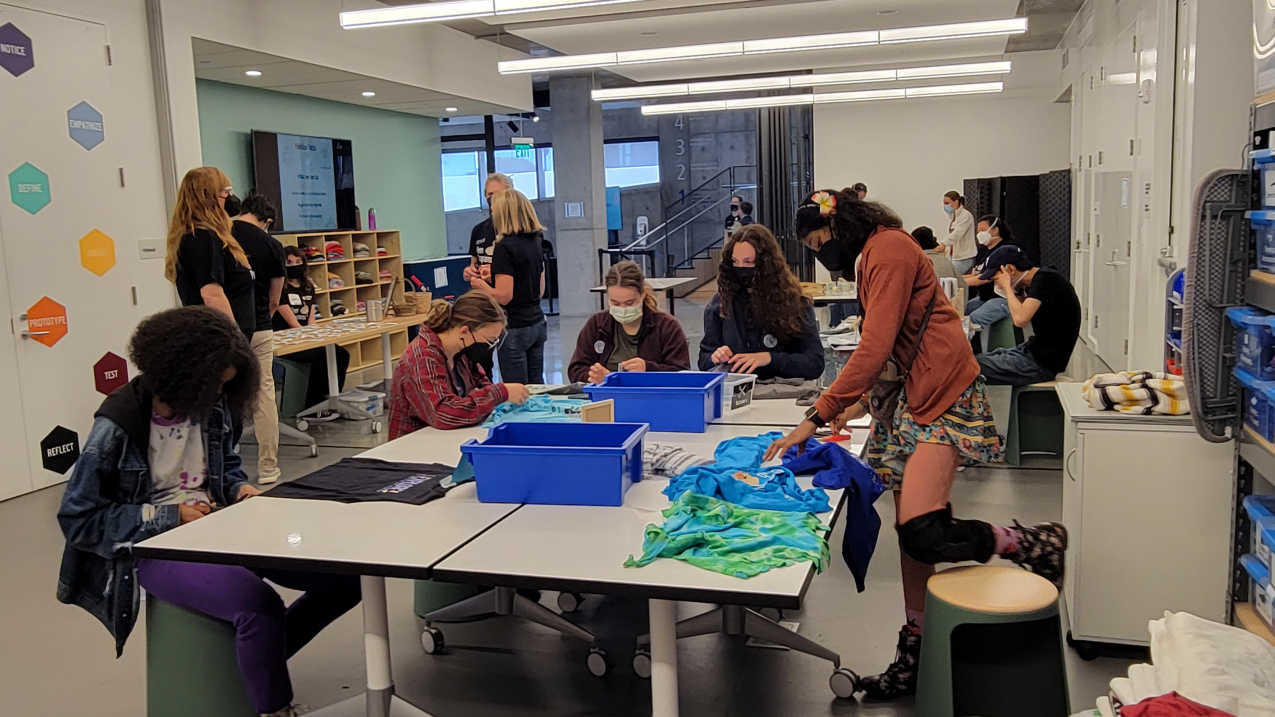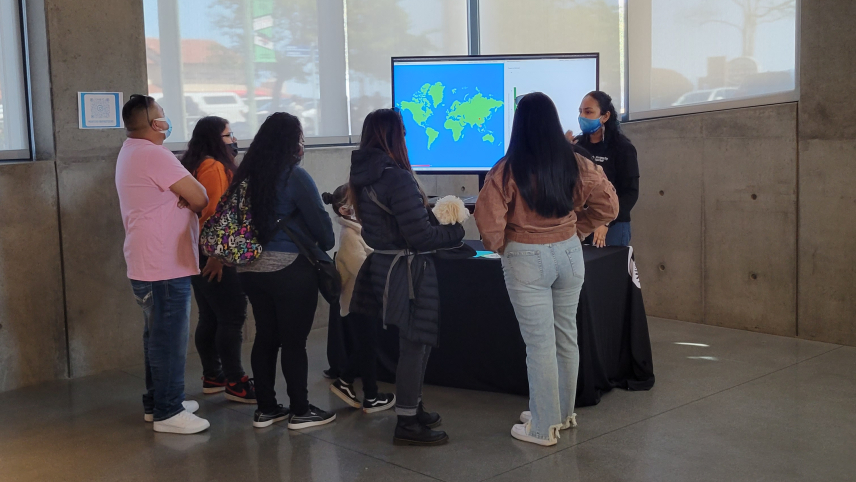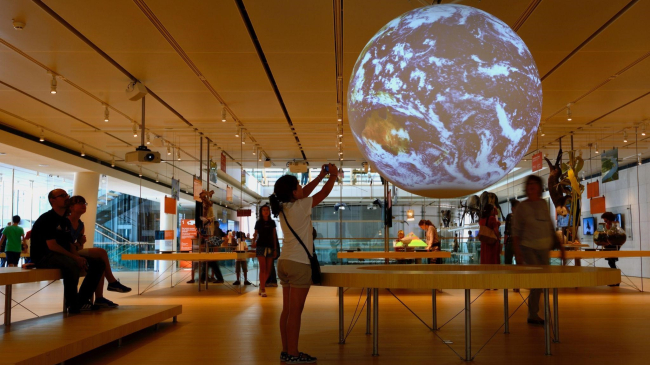From live kelp forests to frolicking otters, the Monterey Bay Aquarium offsite link provides a window into the wonders of the ocean and the region it serves. This institution is one of 25 aquariums and marine science education centers across North America that make up the Coastal Ecosystem Learning Centers (CELC) network. Together this network engages the public in protecting coast and marine ecosystems and work on shared priorities, including youth engagement.

Teen volunteers from Monterey Aquarium lead an activity to upcycle used T-shirts at the Fashion Without the Footprint event to address the environmental impacts of fast fashion. (Image credit: Monterey Bay Aquarium)
The network worked with a team of high school aquarium volunteers to plan the 2021 CELC Virtual Youth Summit, which brought together over 60 aquarium high school volunteers from the CELC network to hear from speakers on how to make a difference for the ocean through art, writing, advocacy, and more.
A group of teens from Monterey Bay Aquarium attended the summit and received funding from NOAA and the North American Association for Environmental Education offsite link to take what they learned to design and lead an action project in their local community. The team chose to implement an event called Fashion Without the Footprint to raise awareness on the impacts of fast fashion – inexpensive clothing produced rapidly in response to the latest trends – and the benefits of slow fashion – a sustainable form of fashion that encourages people to buy clothing that are long-lasting. We asked the teens to reflect on their project and what they learned through their experiences. Read what they shared below!
Tell us the story of your project.
Our team provided an educational introduction to the harmful effects of fast fashion on the ocean and the benefits of slow fashion to the public on Earth Day weekend 2022. We created an event called Fashion Without the Footprint to reach other teens who might be blinded by the flash of fast fashion and to raise awareness on its negative impact on the environment, ocean, and human rights. We led three tables of educational stations, each addressing a different aspect of fast fashion and comparing its harmful effects to slow fashion’s beneficial effects. After being educated about fast fashion, attendees could participate in slow fashion by creating T-shirt bags from donated T-shirts. Participants could screen print a logo of their choice, either the Monterey Bay Aquarium logo or a graphic that the student team designed that summarized the Fashion Without the Footprint event.
Local slow fashion vendors were invited to host a table at the event to promote their projects and invite attendees of our event to their store in the future to shop for goods, including sewing materials, dryer balls, and laundry detergent, that would help them participate in slow fashion. Our team encouraged the use of refillable containers for products like laundry detergent for caring for one’s clothes. We set up a craft project where upcycled jars could be decorated and receive a discount if used to refill products later on. We also made buttons using graphics designed by the student teen team and a button press provided by the Aquarium’s Maker Space Lab. These buttons were another form of slow fashion that served as a reminder and a wearable message to slow your fashion down. We saw many buttons being worn by other teen volunteers at the aquarium that attended the event!
What went well in the project, and what did not go according to plan?
Our event was very successful. We had a total of 130 people attend our interactive, educational Fashion Without the Footprint event in Monterey Bay Aquarium’s Education Building, the Bechtel Center. At the end of the day, our students and team felt satisfied with the result from their efforts to spread awareness about this problem affecting our common home, the ocean. Over a year was spent learning, organizing, and planning for this event, so the pressure was on for it to go well. Our hard work was rewarded by the impact we were able to make!
If a version of this event exists in the future as the aquarium continues to dedicate time and energy to addressing fast fashion and the benefit of slow fashion, more topics within the issue could be addressed. We covered the basics of what fast fashion is versus slow fashion, human rights issues around the world within fast fashion, and how fast fashion negatively impacts the ocean. However, there are many more elements to this issue that can be discussed further, perhaps in a sequential event that adds onto our first event!

What impact did your project have?
Our team made our community more aware of what goes into making our clothes and how we can benefit the relationship between the ocean and our clothes.
How did the project impact you?
We felt very inspired taking an idea and turning it into reality that effectively made change. Overall, we had a very positive experience as we got to participate and help lead a project that contributed to the fight against fast fashion through education led by teens, for teens. We think we grew as leaders and project managers exponentially with help from Kim Swan, our supervisor and Teen Programs Manager at the Monterey Bay Aquarium!



